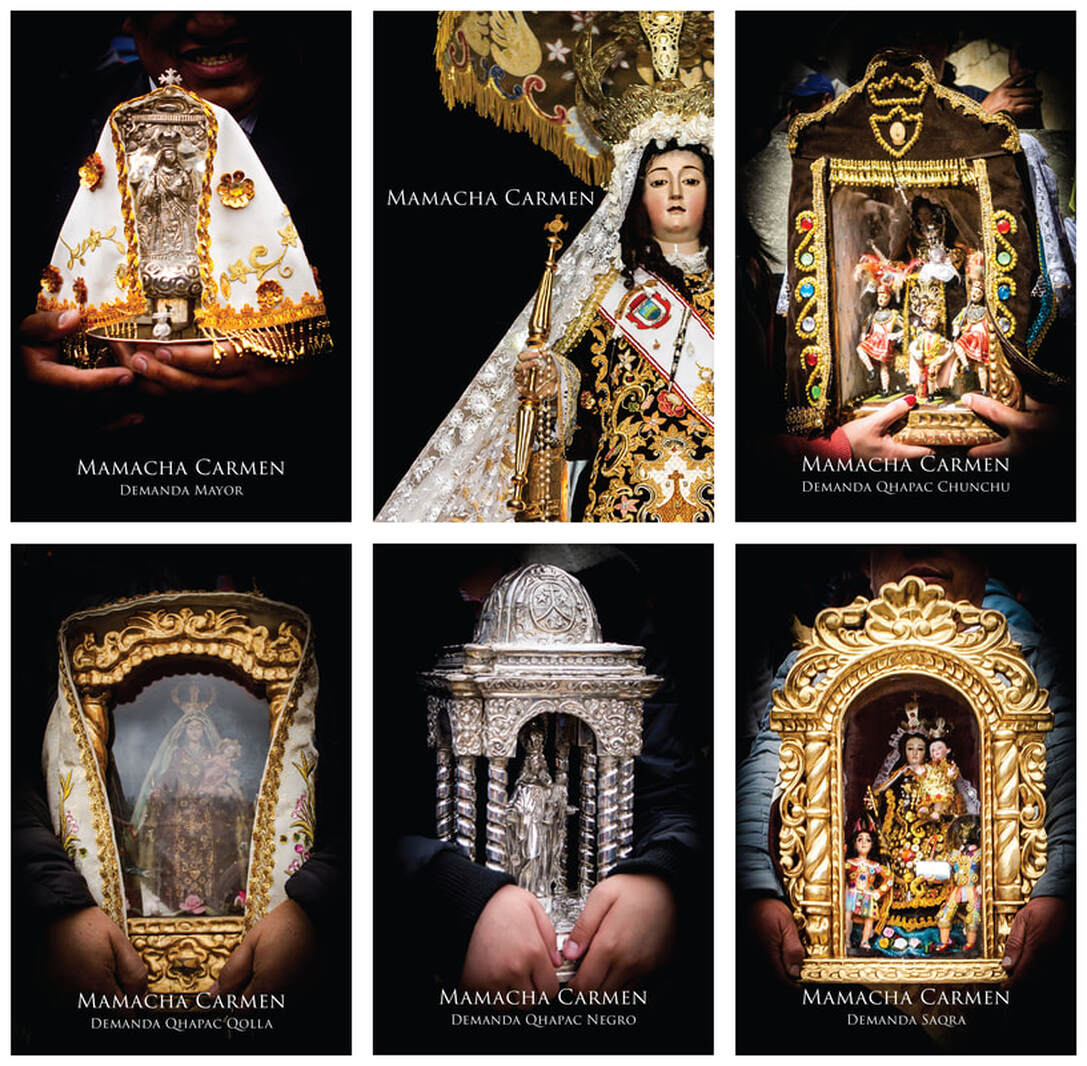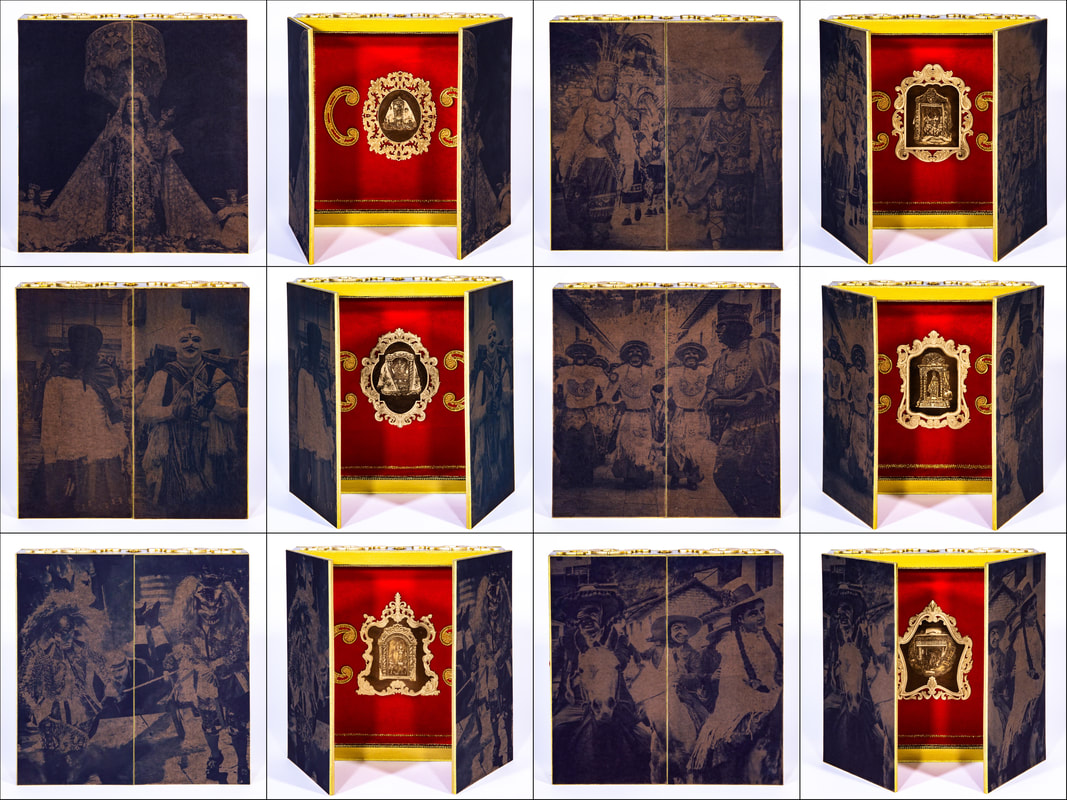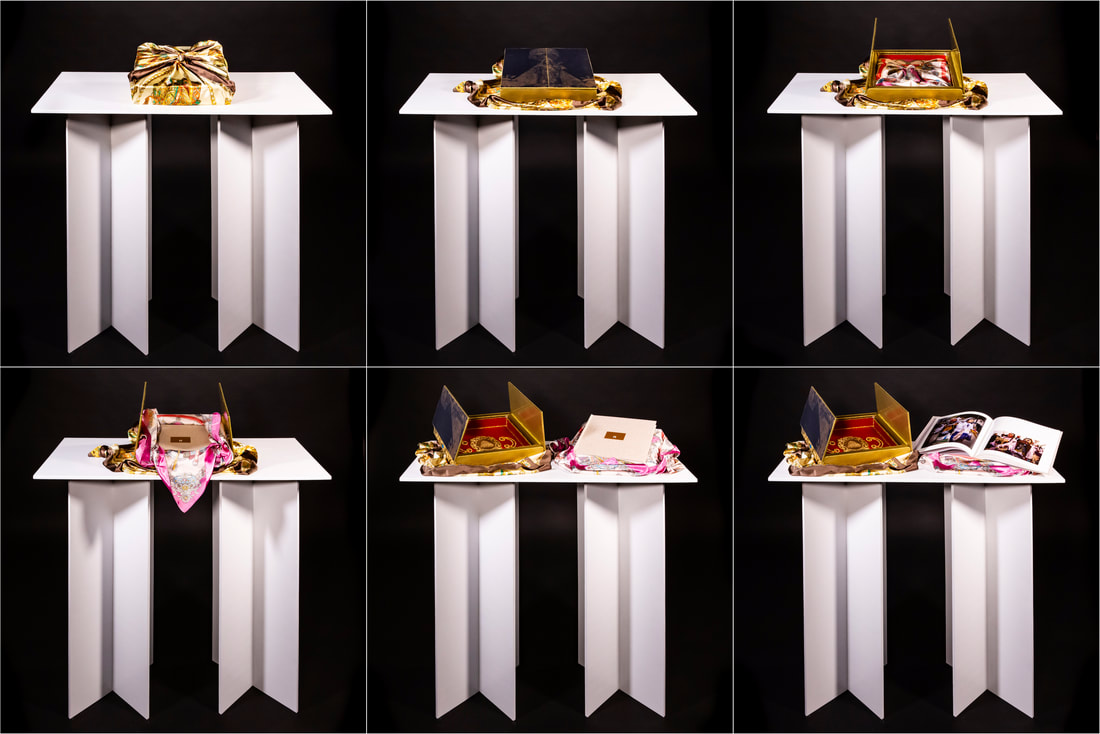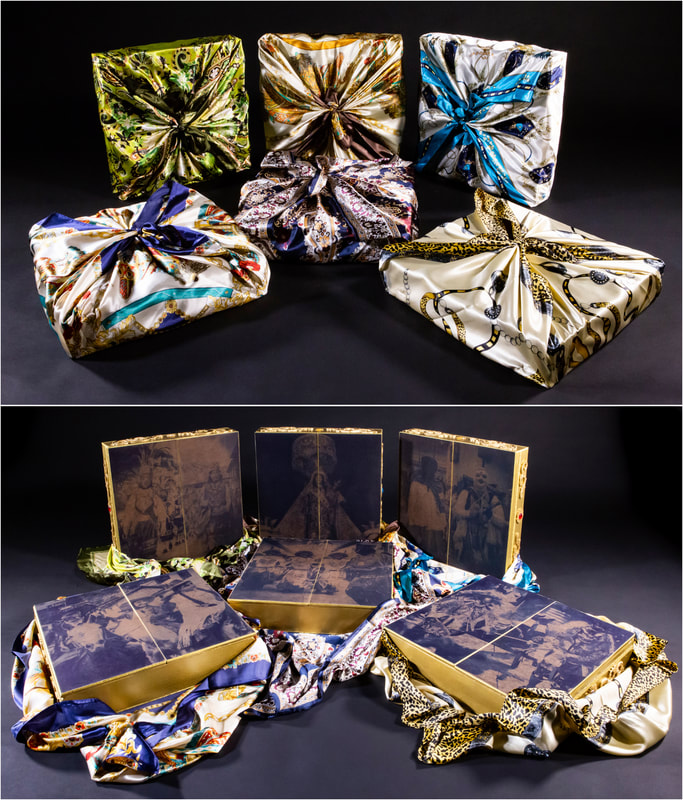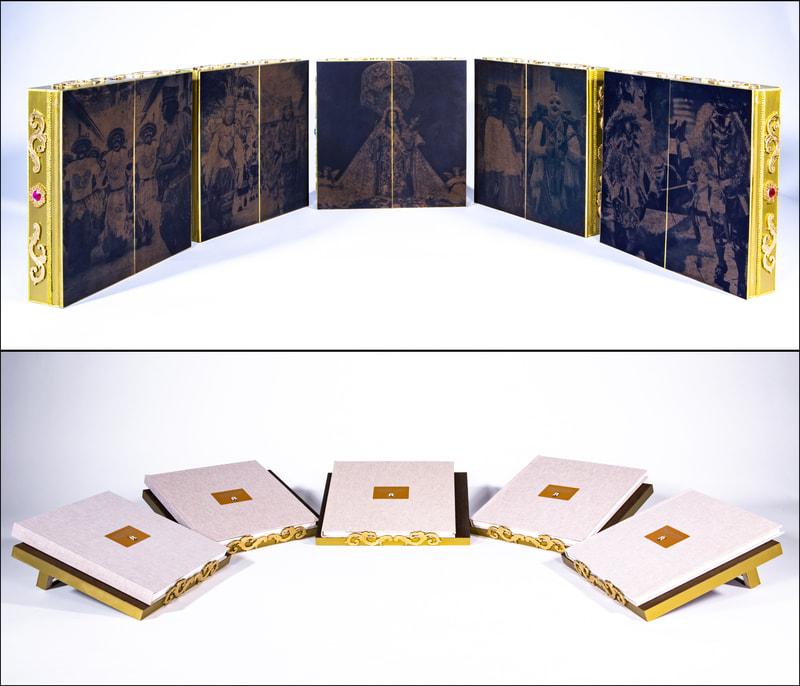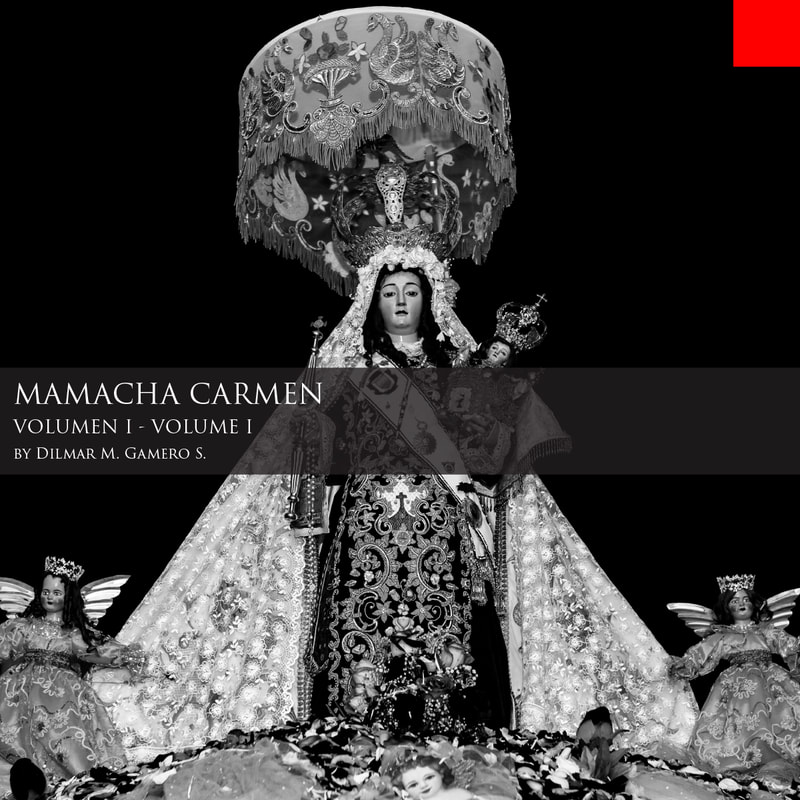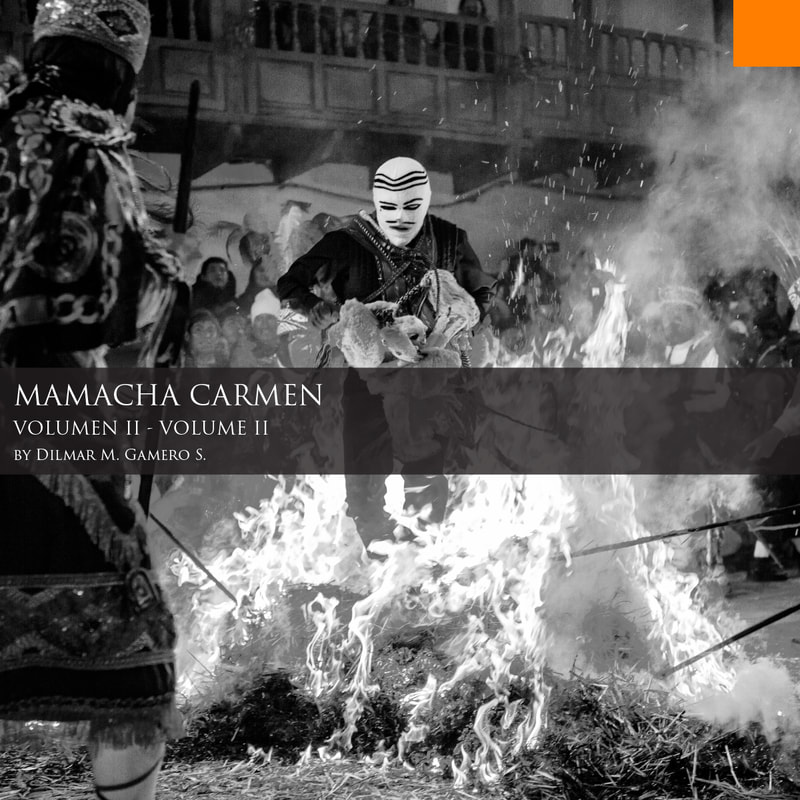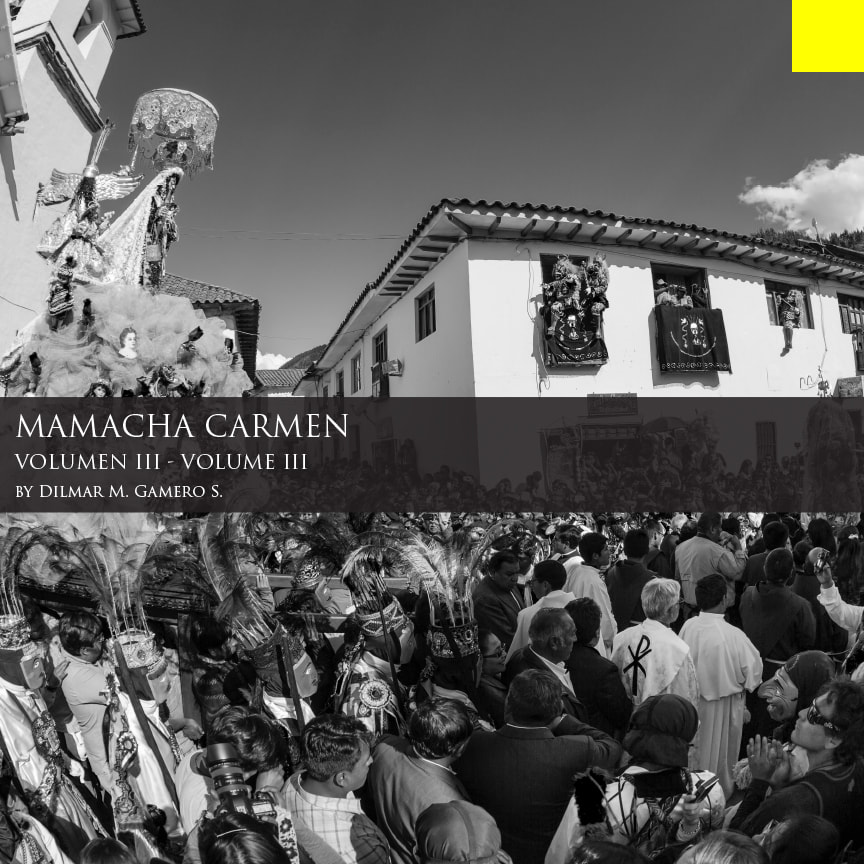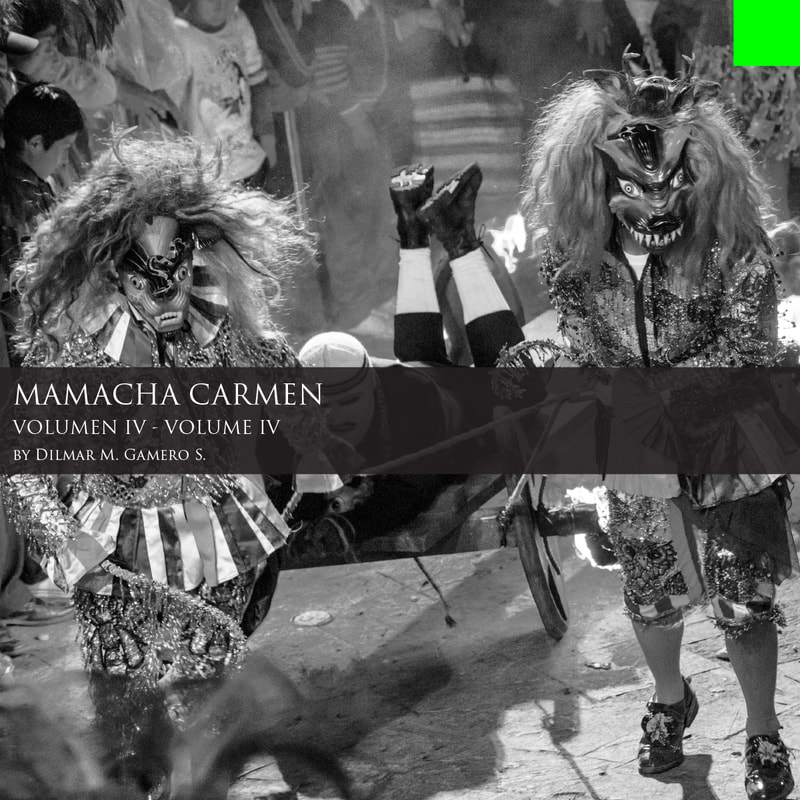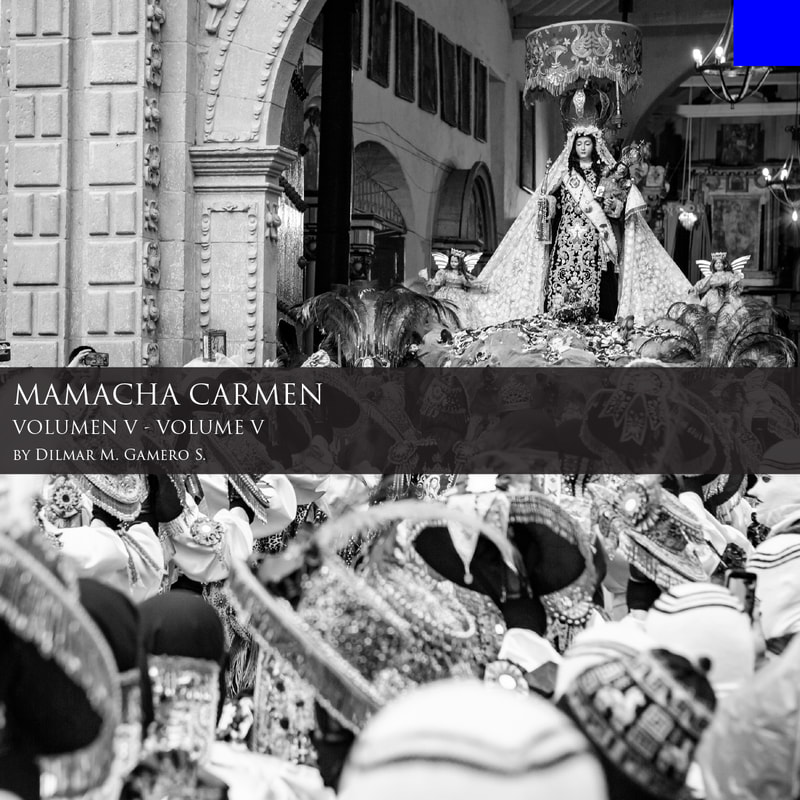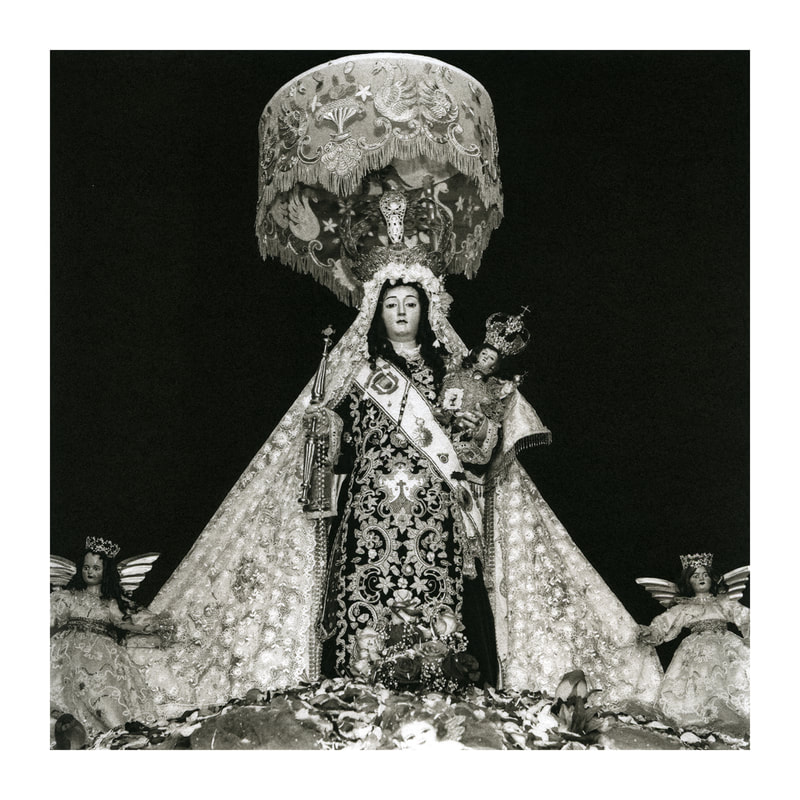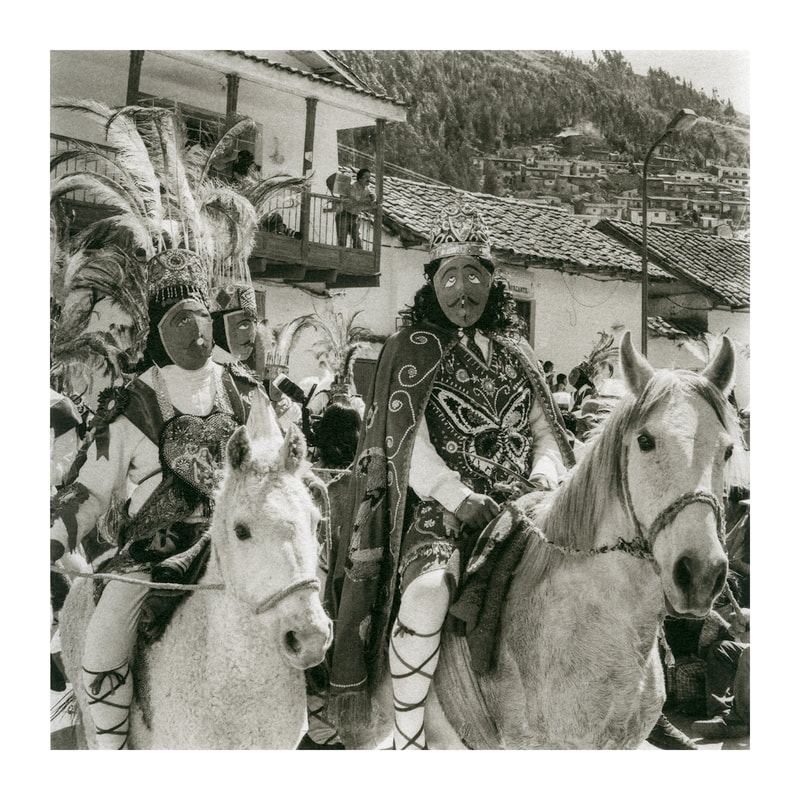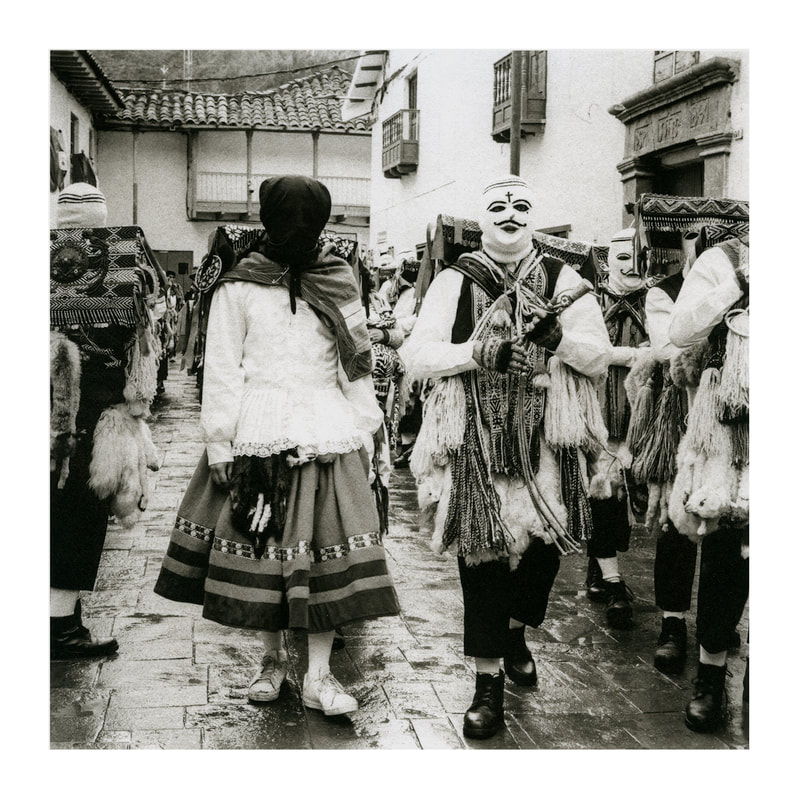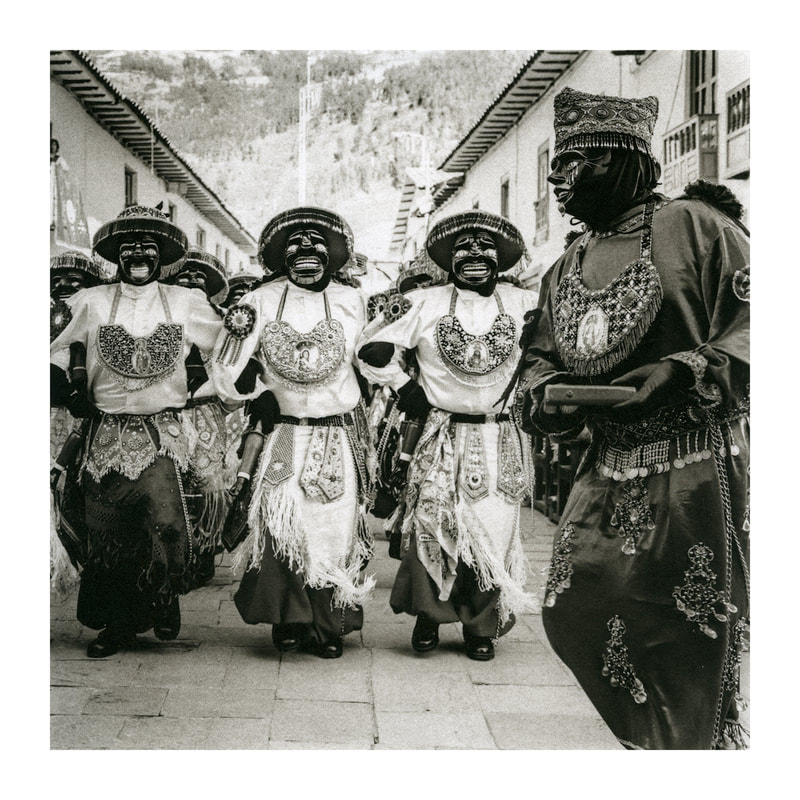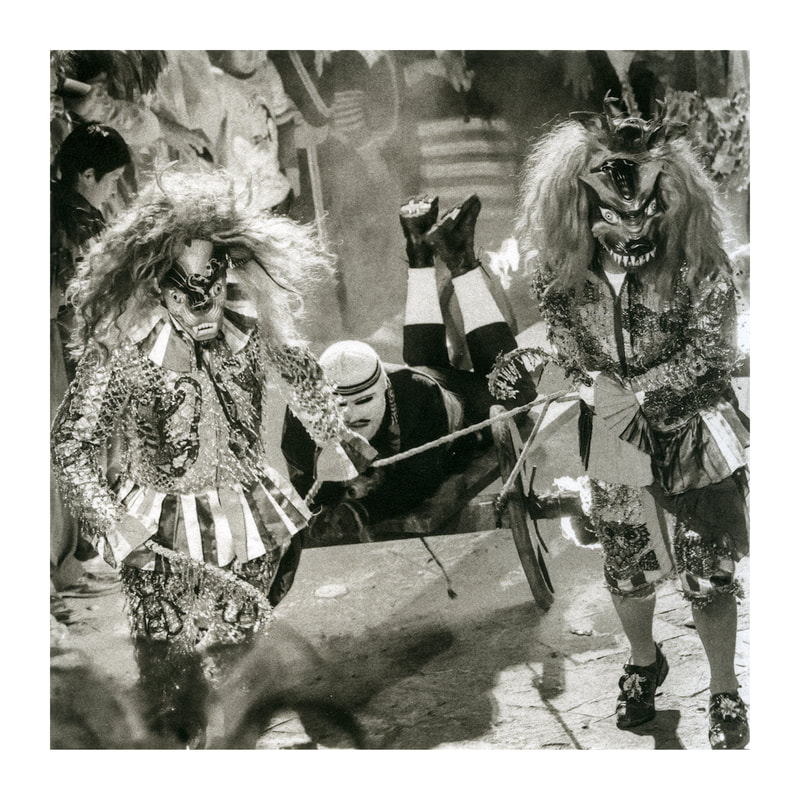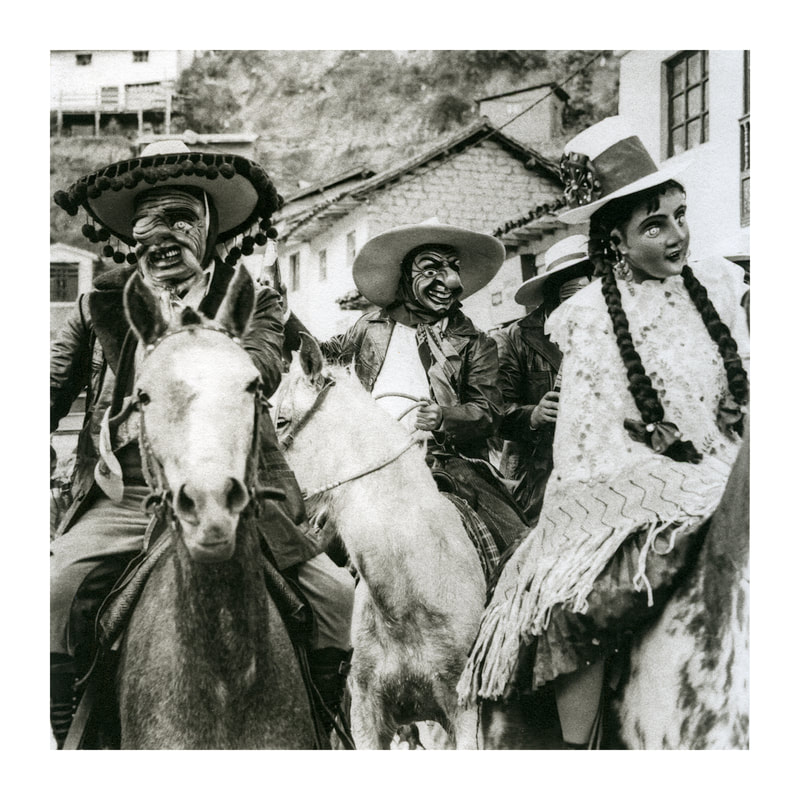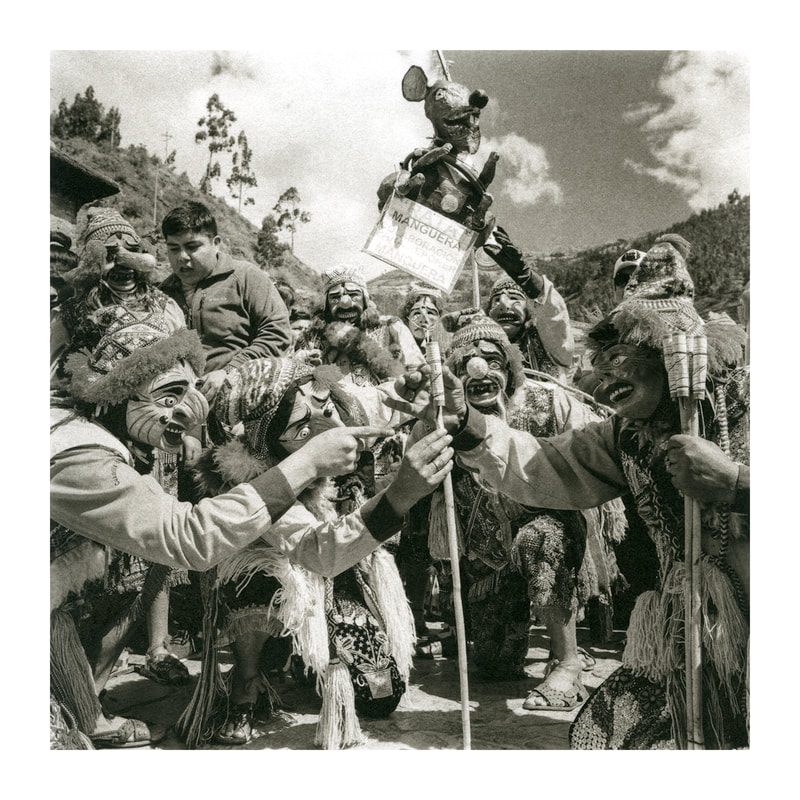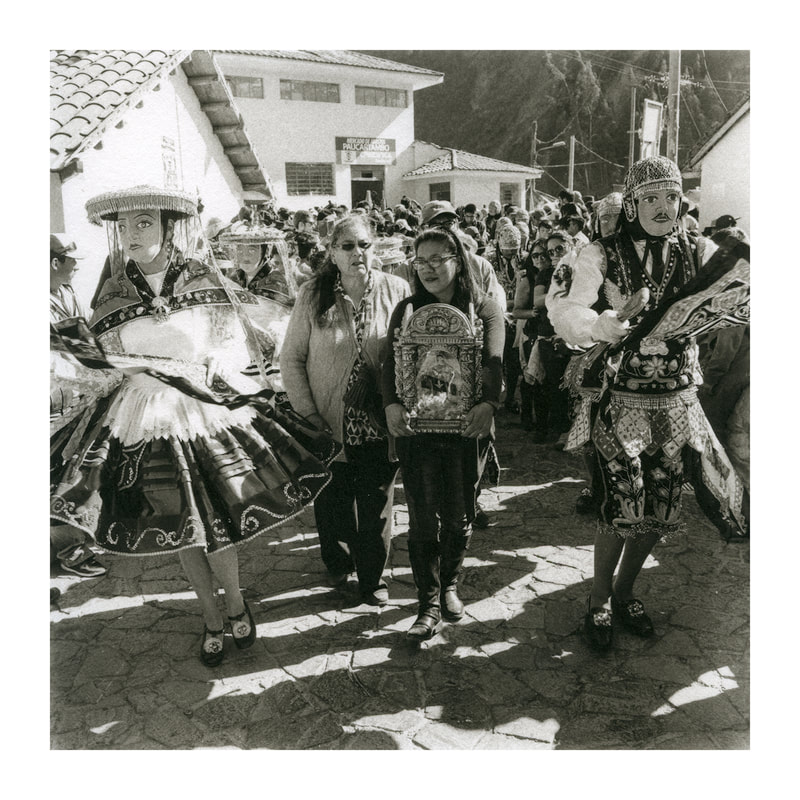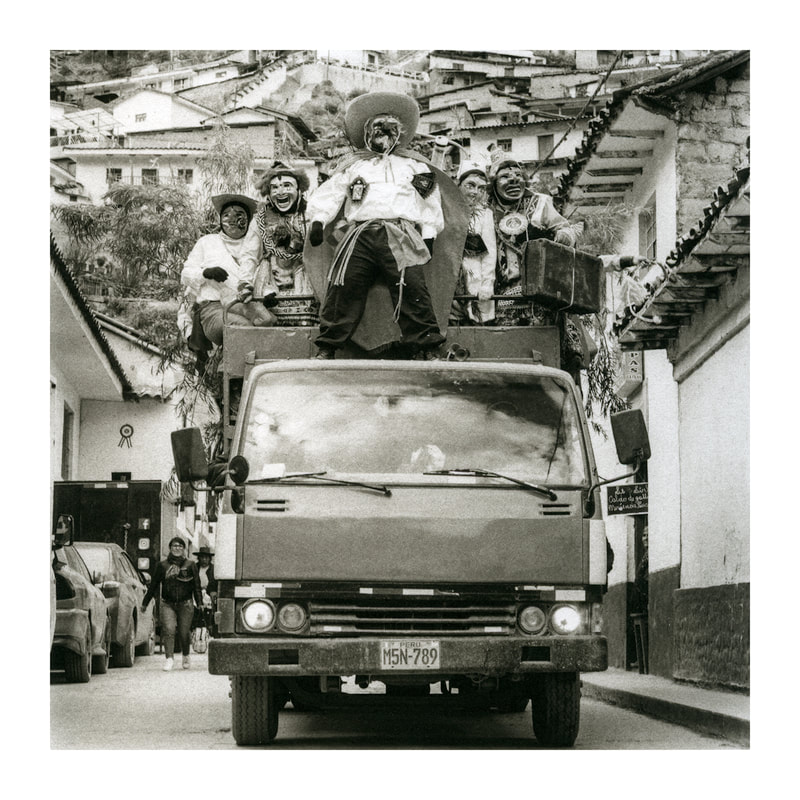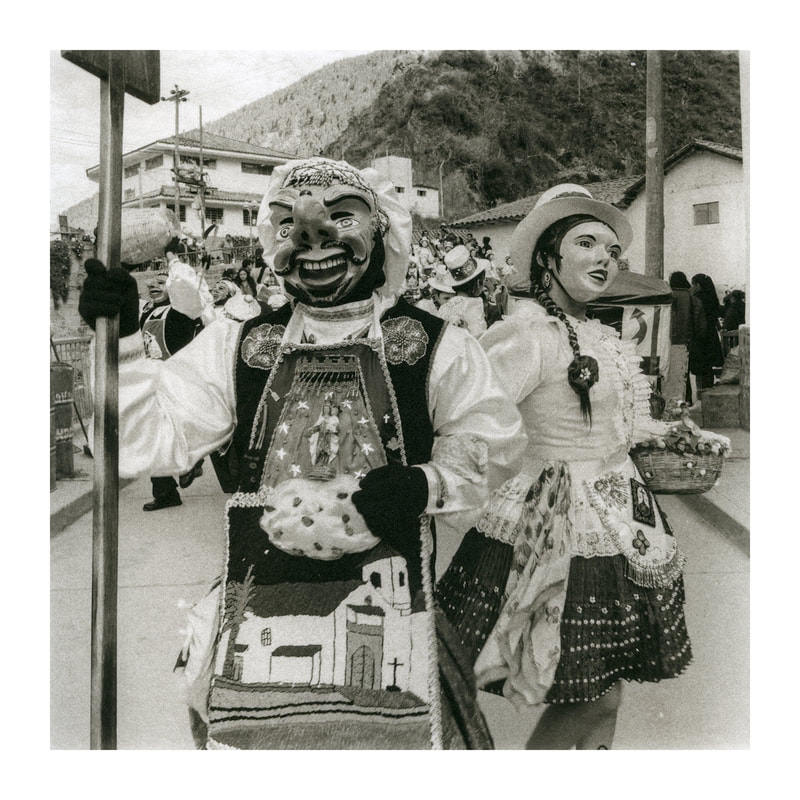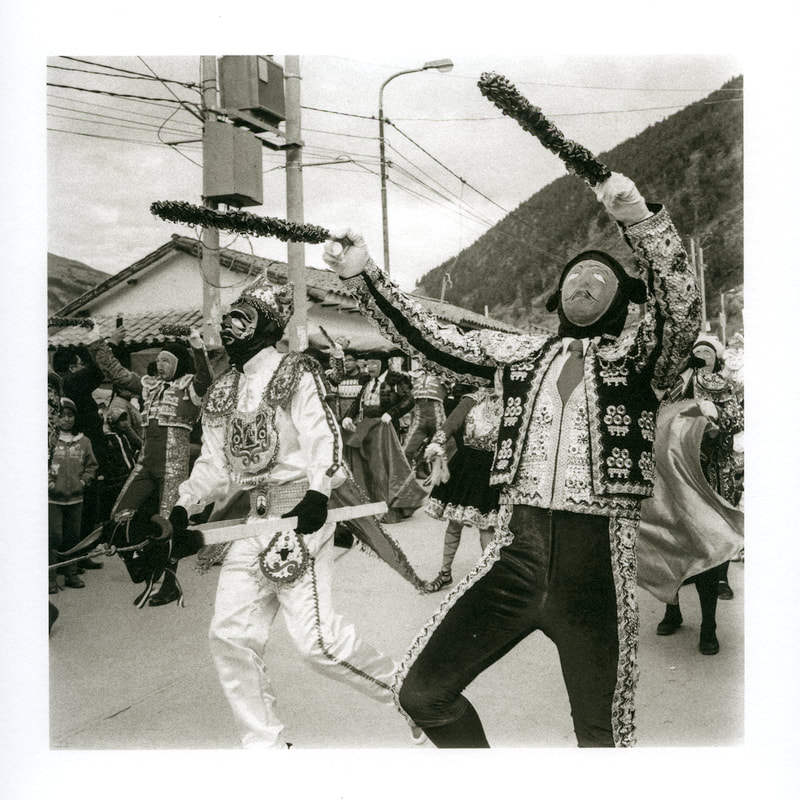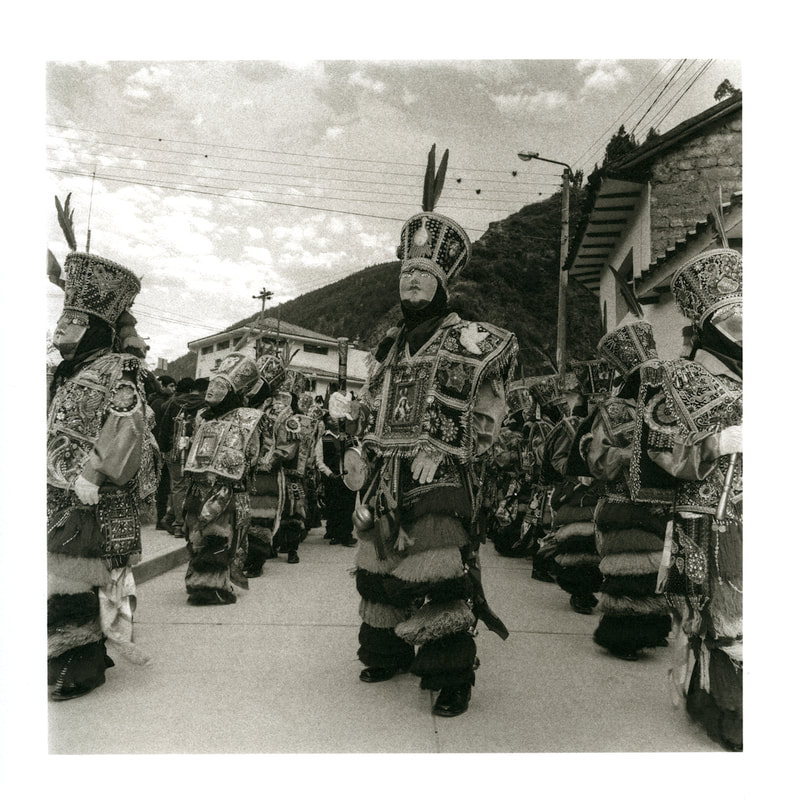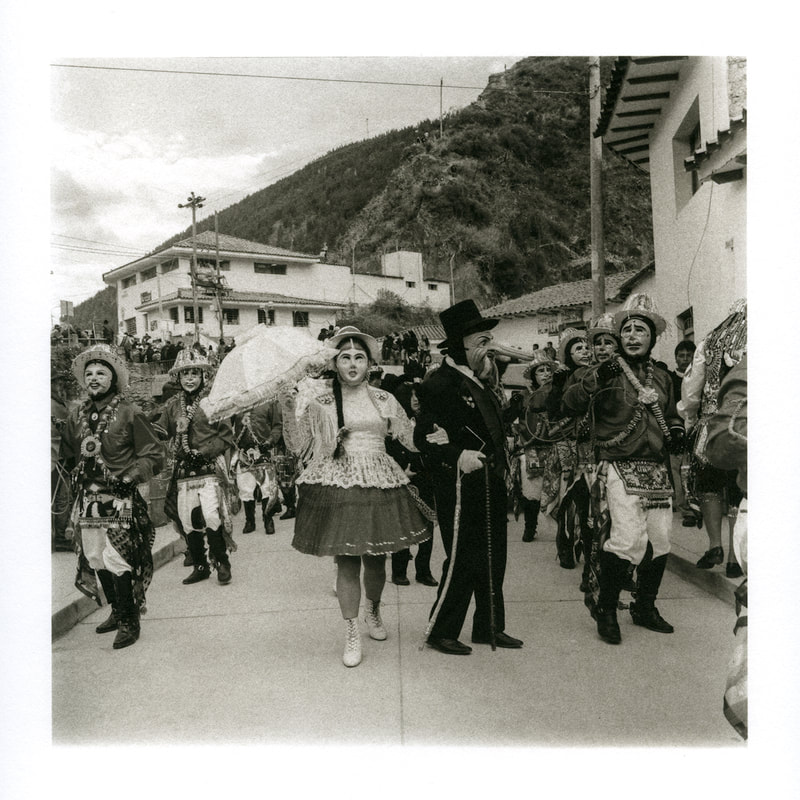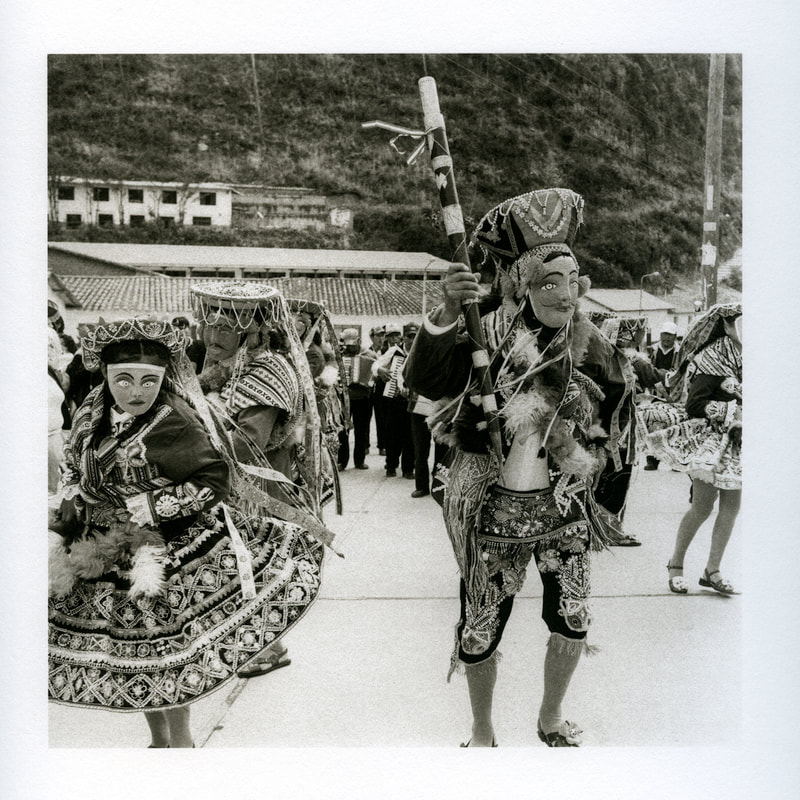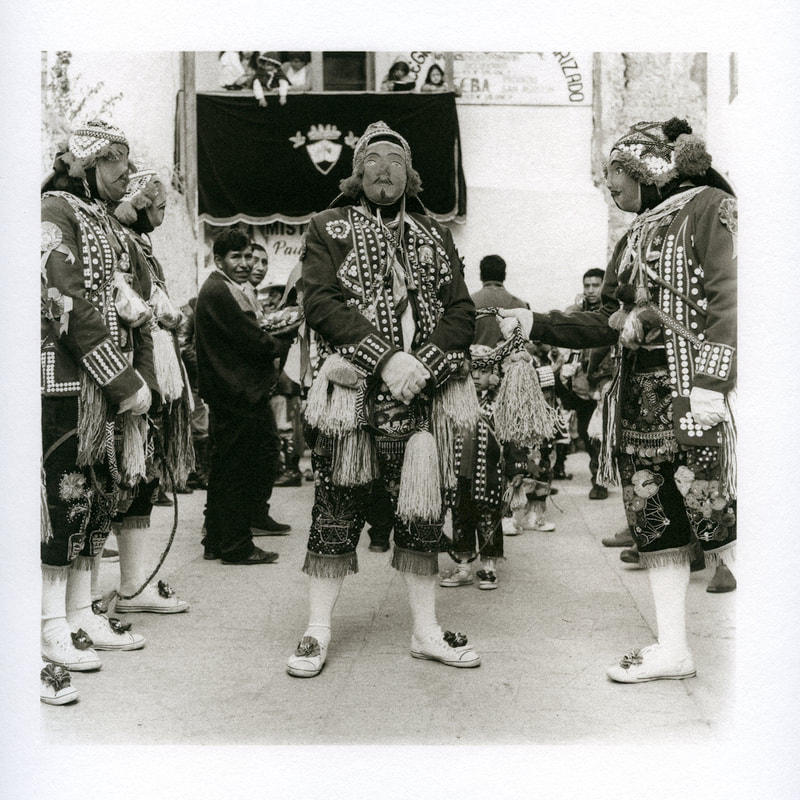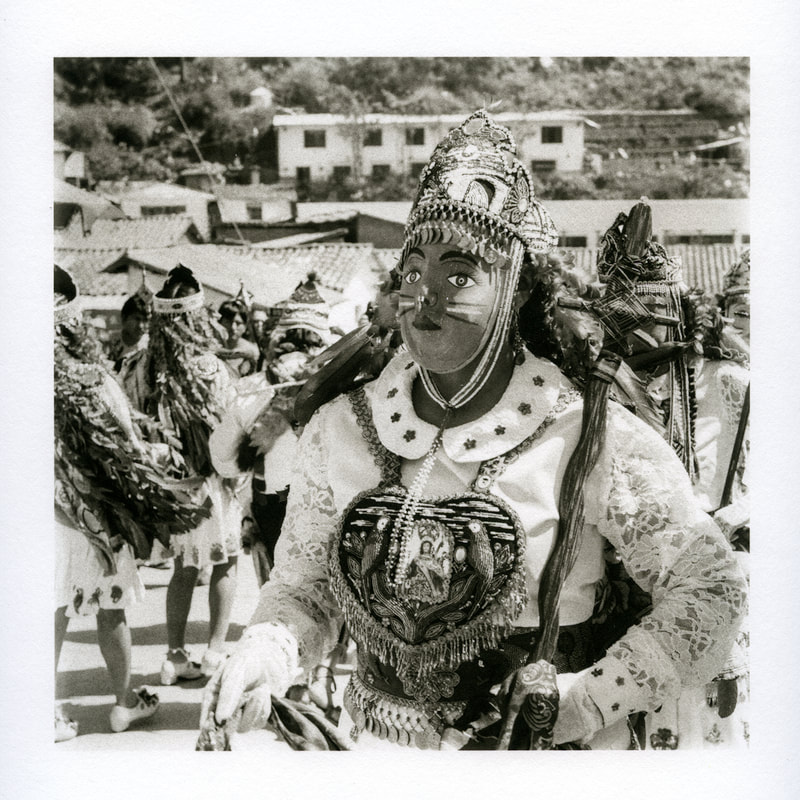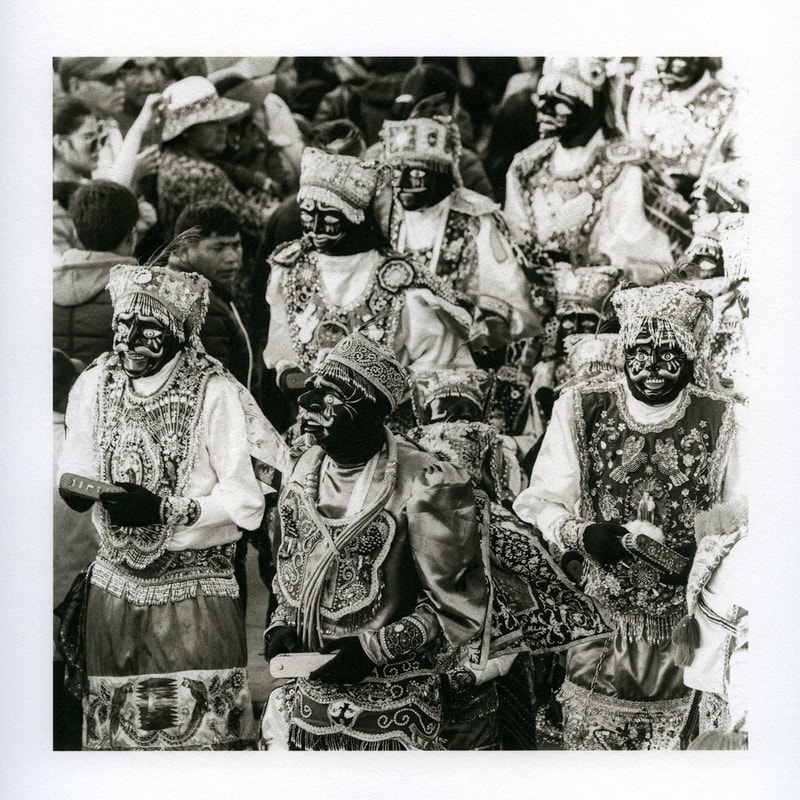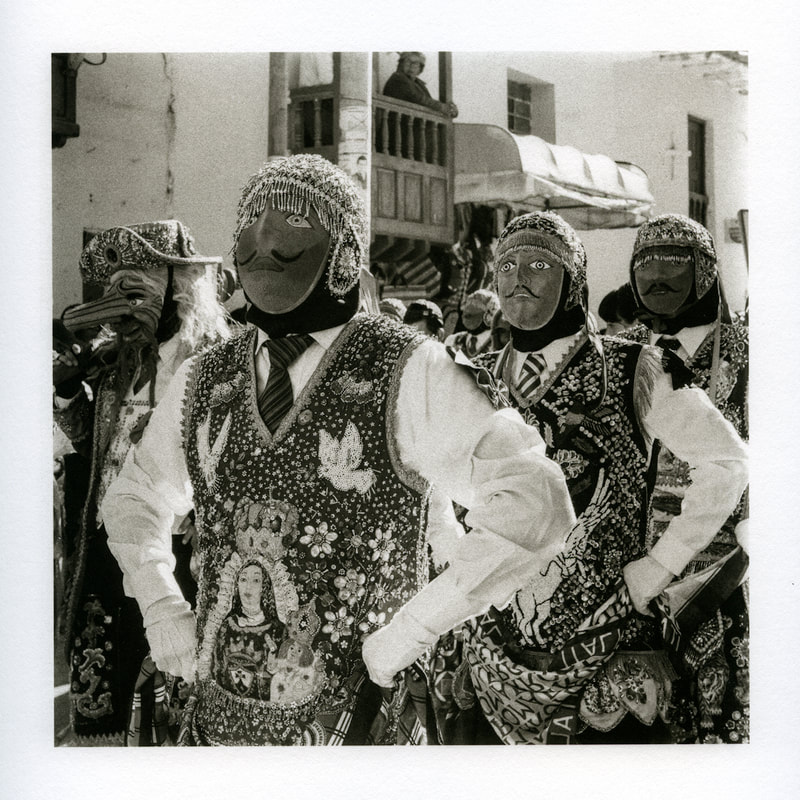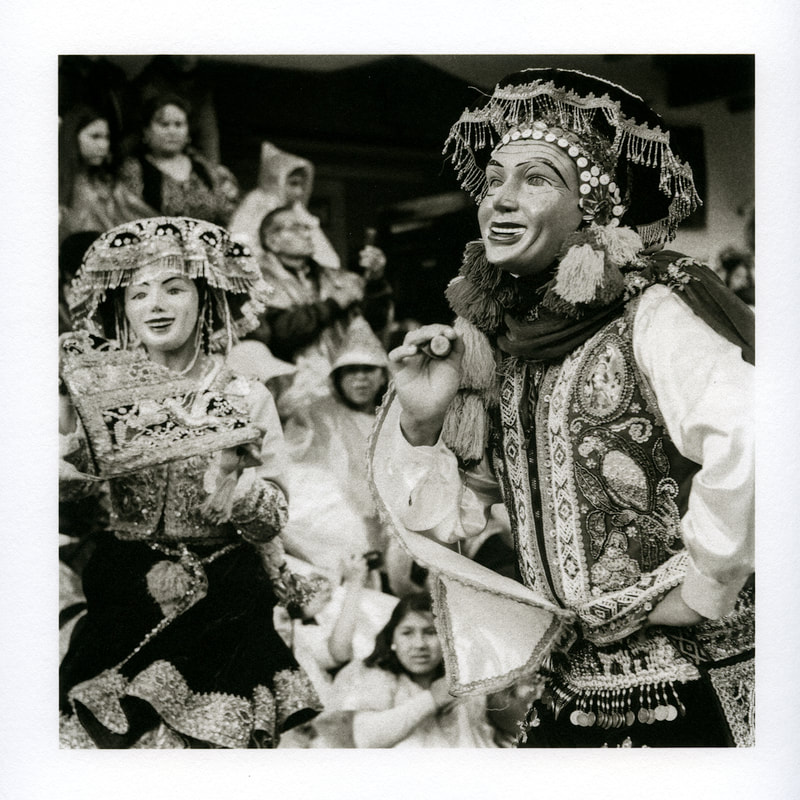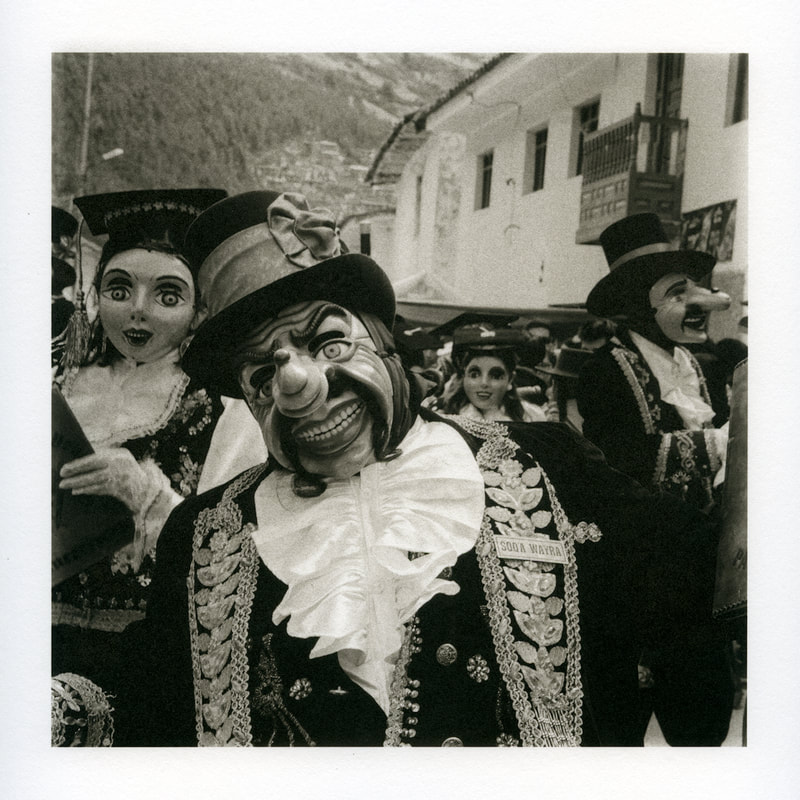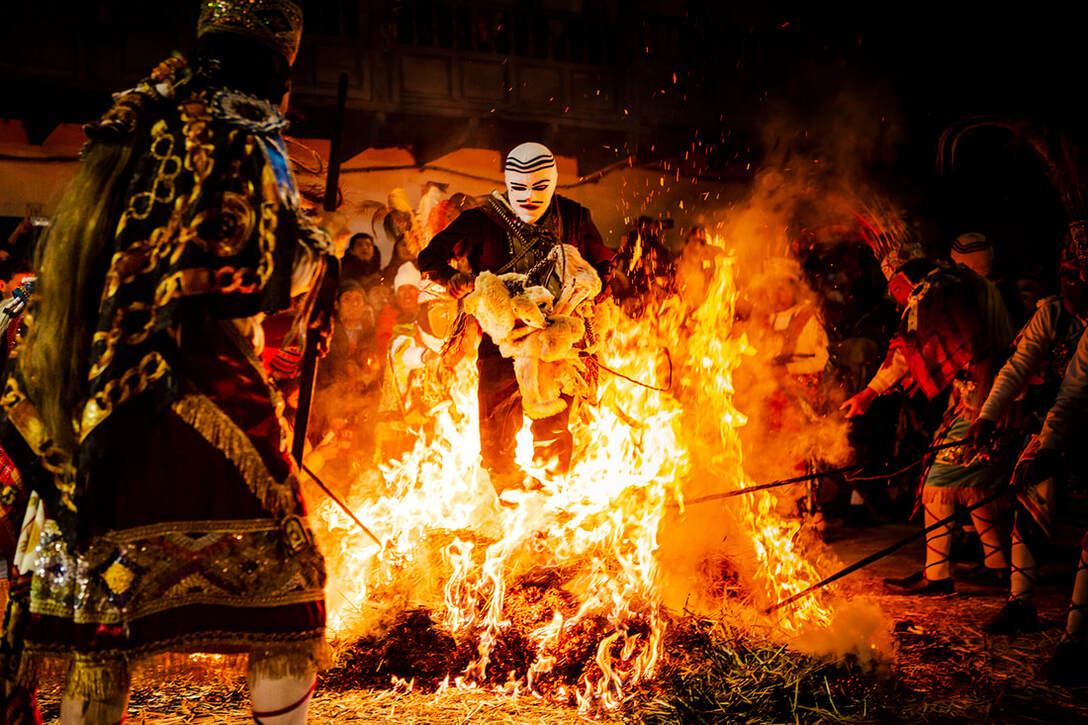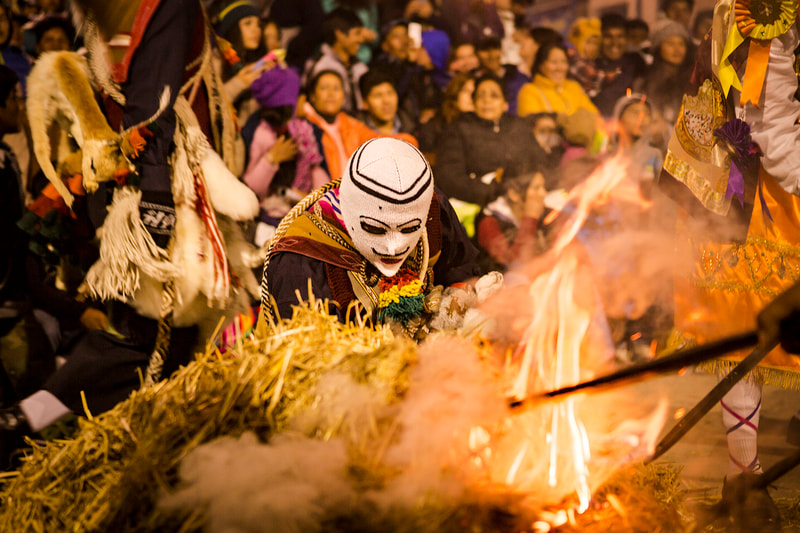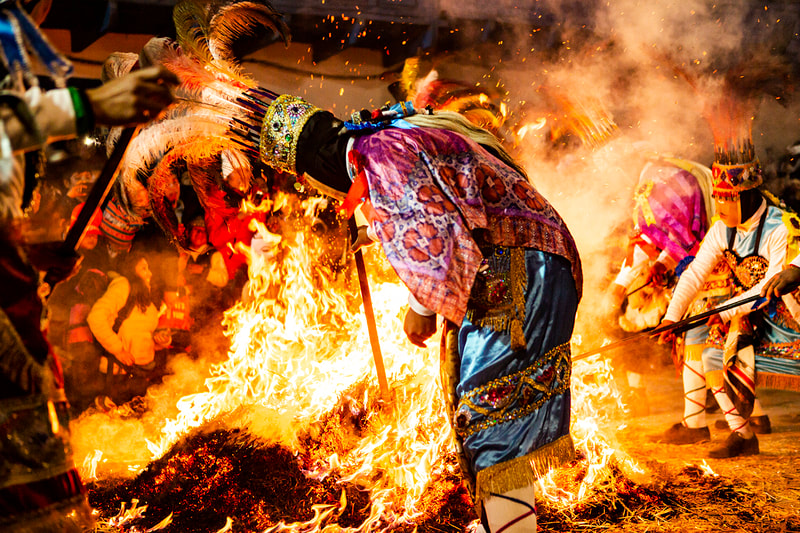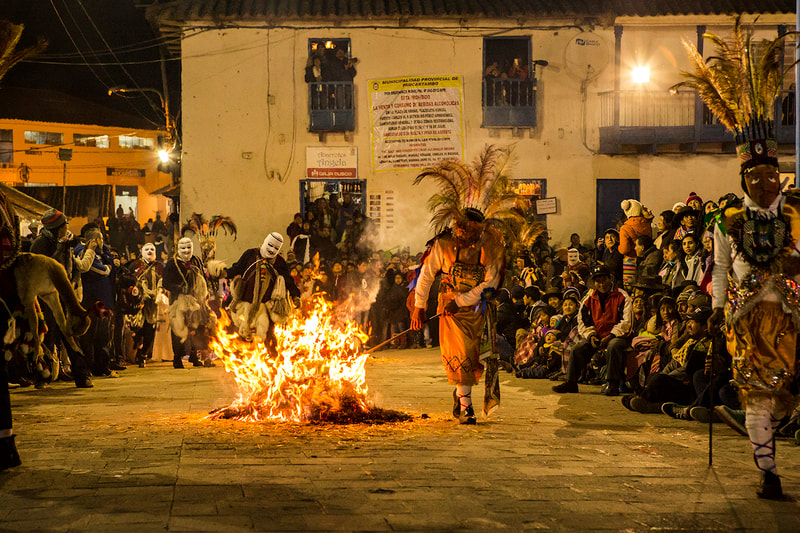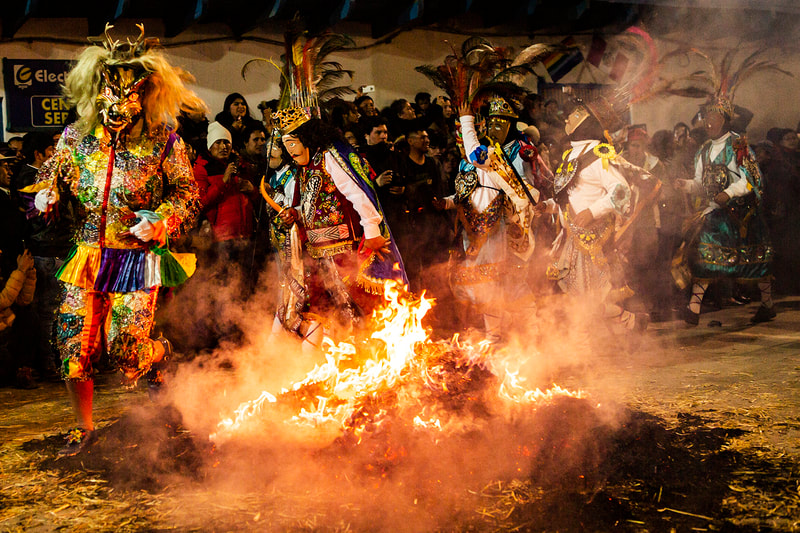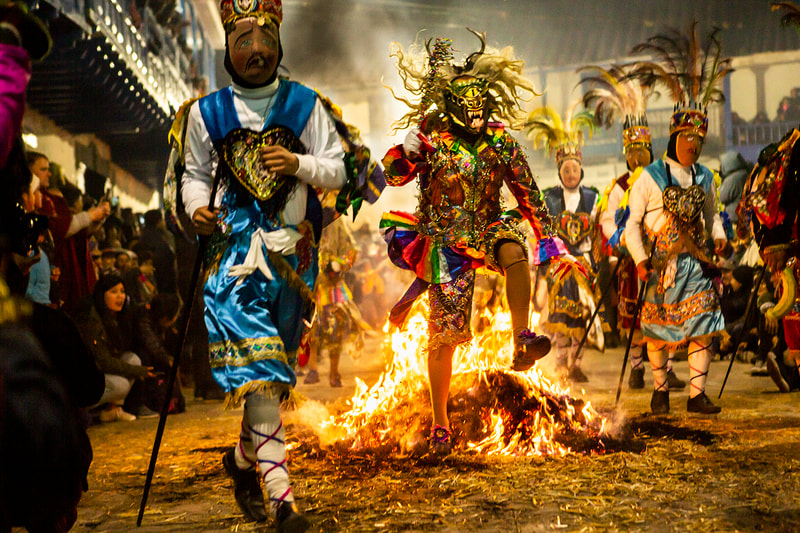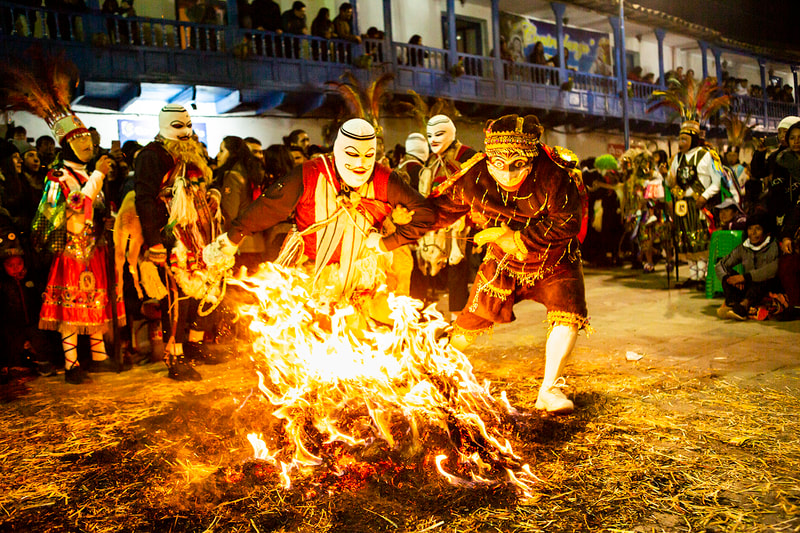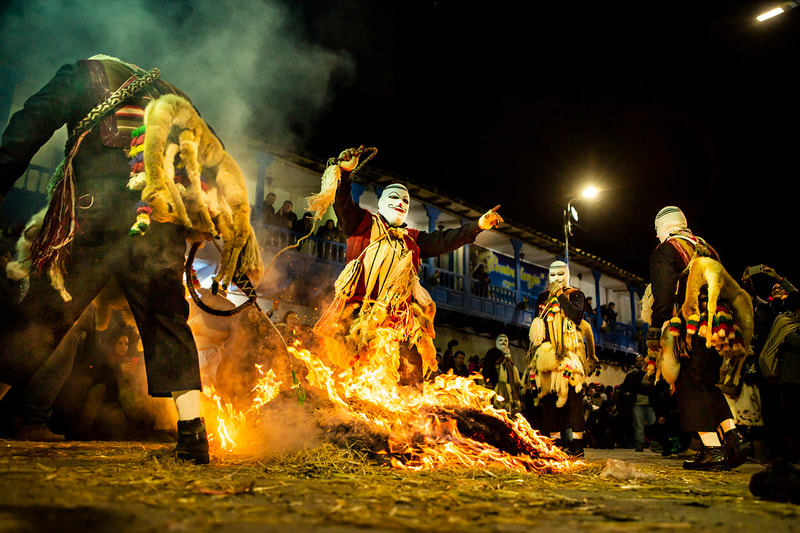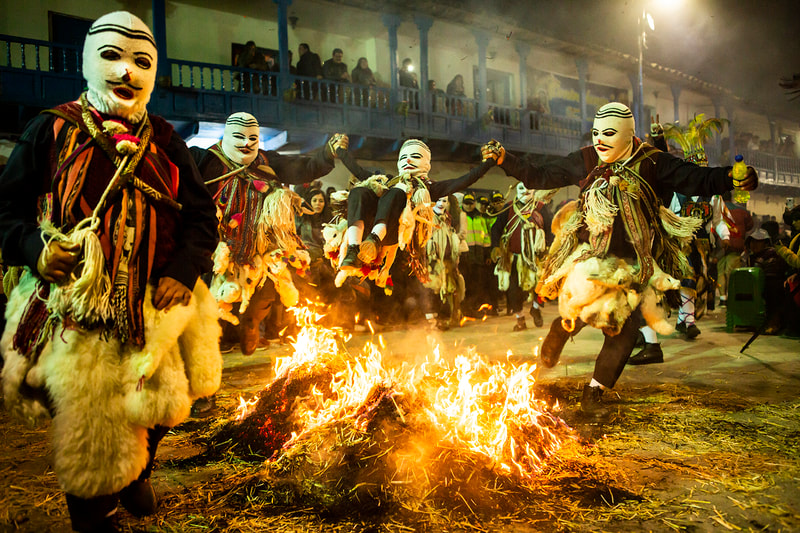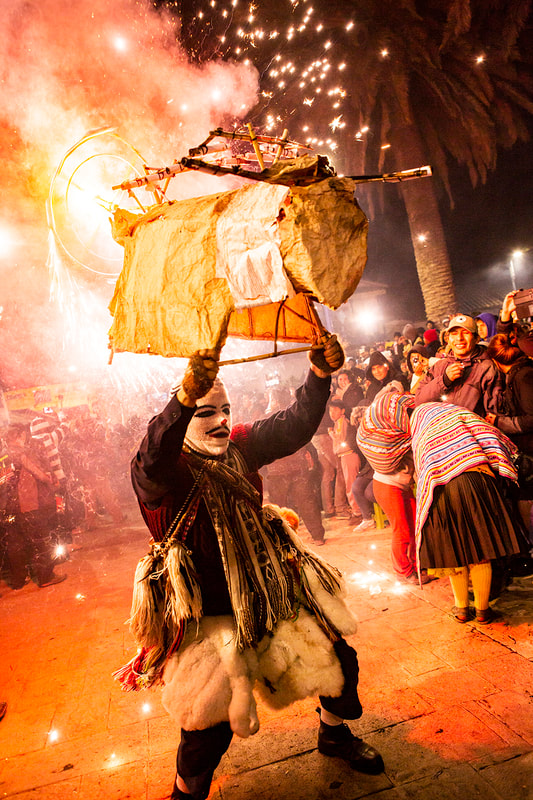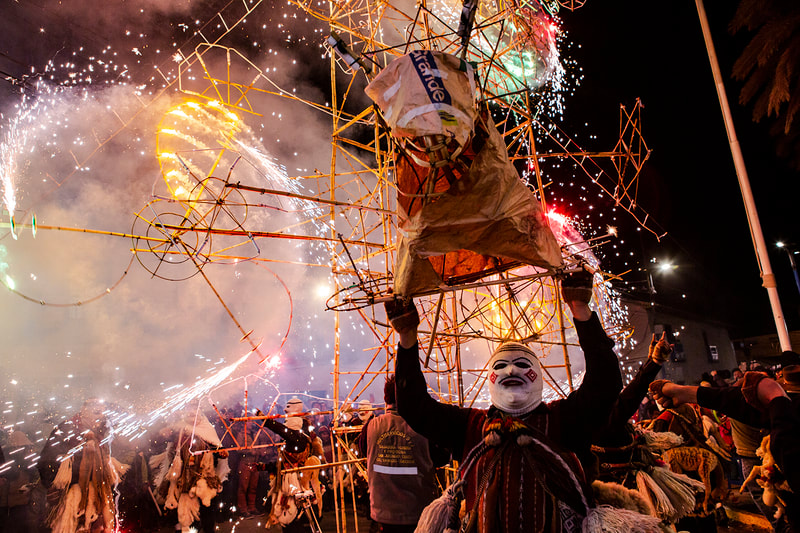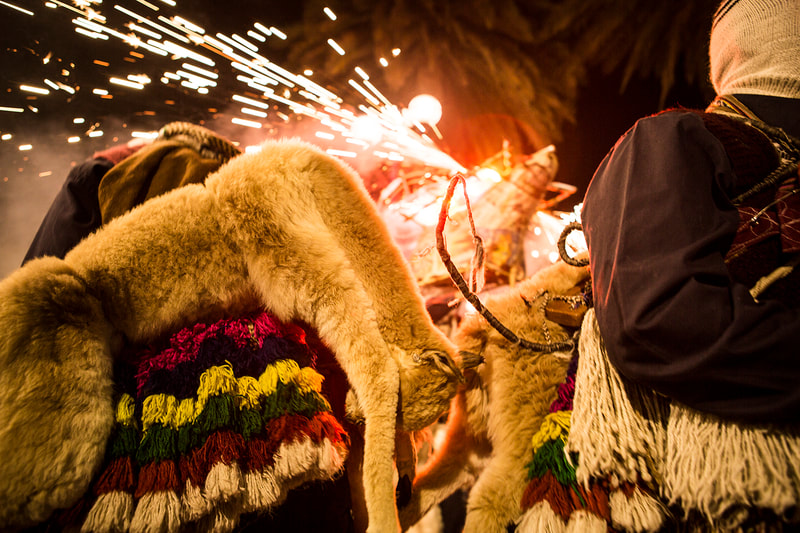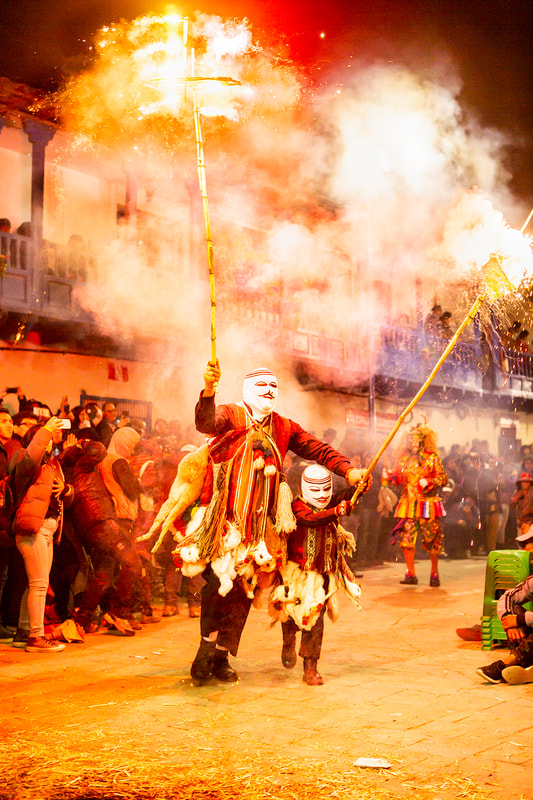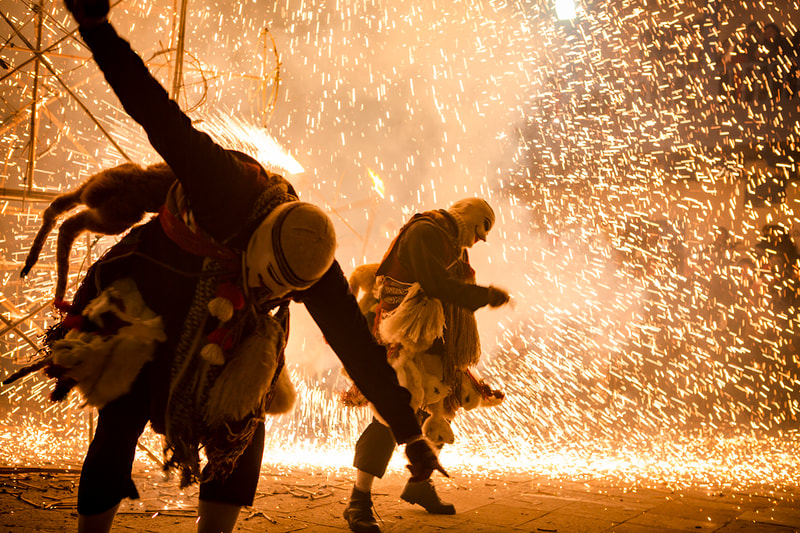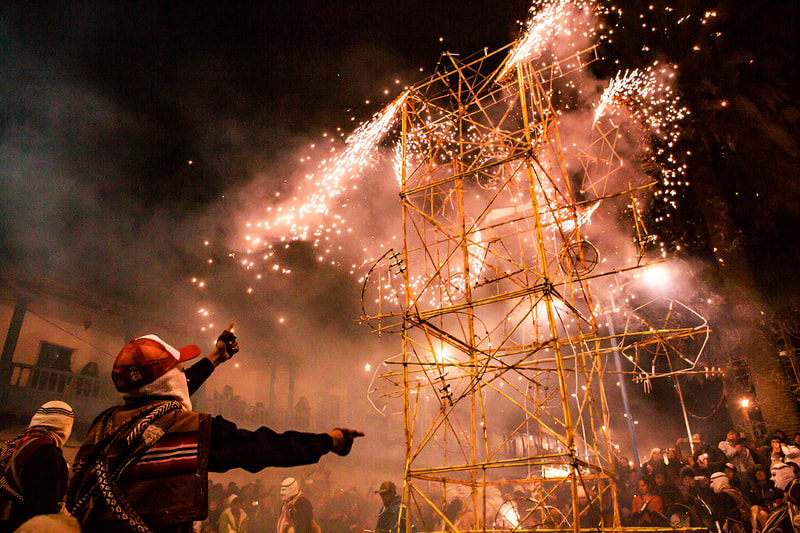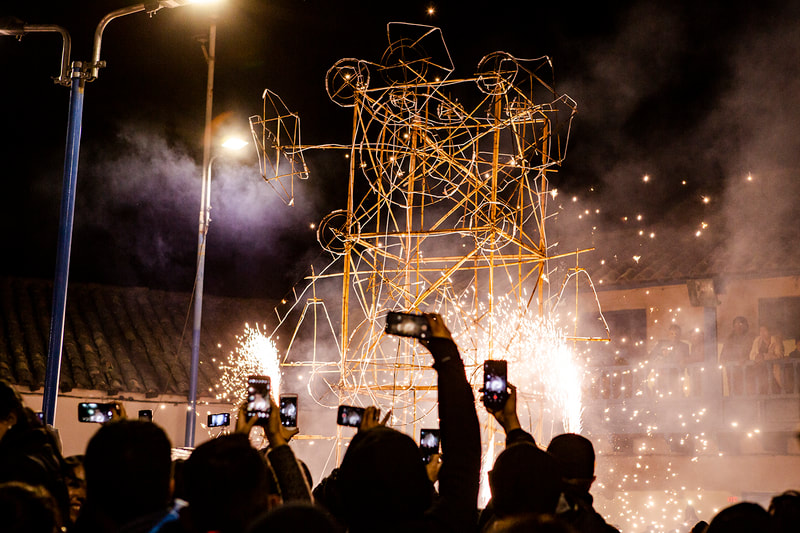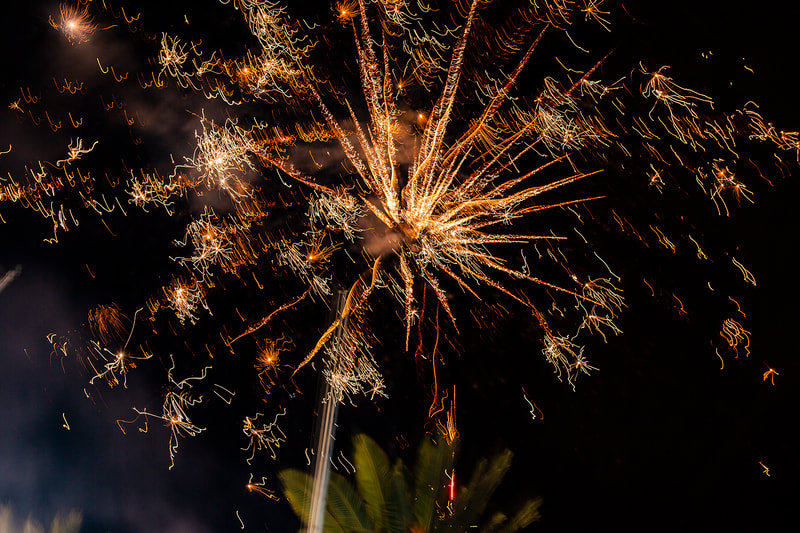Mamacha Carmen
(2007 - present)
“If you only pray, you pray once;
if you pray and sing, you pray twice;
but if you pray, sing and dance,
you pray three times.”
(traditional Paucartambo saying)
if you pray and sing, you pray twice;
but if you pray, sing and dance,
you pray three times.”
(traditional Paucartambo saying)
|
Every July in the Peruvian Andes, the Mamacha Carmen celebration in Paucartambo, Peru, gathers hundreds of devotees who sing, dance and pray using traditional costuming and ornamentation.
During the procession, the devotees carry spiritual altarpieces, demandas, that contain the sacred figure of the Mamacha Carmen. These demandas preserve the sense of community and identity that integrates Catholic tradition with Andean rituality. These altarpieces and the five-volume photobook are part of my reflective and creative process about this celebration. They include personal photographs, alternative photographic processes, and costume embroidery from the celebration. Each altarpiece contains one volume of a photobook describing the history and story of the festival and a series of Platinum/Palladium prints. After more than a decade of participating in this ritual, I discovered that the real miracle of Mamacha Carmen is how it spiritually and physically engages everyone with faith, color, movement, and the devotion of the dancers and their families. |
Mamacha Carmen
Photobook (2007 - present)
[to have access to each volume of the photobook click on the icons]
[Sources: Captions of the Museum of the Direction of Culture of Cusco in Paucartambo, songs of the musical group Los Campesinos (musical group from Paucartambo), “Safeguarding Plan of the Mamacha del Carmen” published by Crespial and the Ministry of Culture (2012), and testimonies collected from dancers and Paucartambo people]
Mamacha Carmen and Her Dancers
Platinum/Palladium prints
Print: 7" x 7" inches
Sheet: 11" x 11" inches
QONOY: DANCING WITH FIRE
Extract from the photobook: "Mamacha Carmen" (Volume II. Chapter 5: July 15th)
|
The oral tradition says that the King of Spain sent two images of the “Lady of Mount Carmel” to Peru, one for Puno and the other one for Cusco (Paucartambo). It seems that the most beautiful one arrived at Paucartambo by mistake. The authorities of Puno (Qollasuyo, land of the “Qollas”) tried to recover the most beautiful one, but Paucartambo (land of the “Chunchus”) did not accept the deal. This is the main reason for the conflict and fight between these towns (“Qollas” and “Chunchus”) each of whom claim that the “Mamacha Carmen” belongs to them.
“Qonoy” is a ritual celebrated during this festival on July 15th (the first day of the celebration). It remembers how the “Qollas” (white-masked men who represent the llamas’ caretakers), came from the Qollasuyo in the highlands of the Andes, to steal the “Mamacha Carmen” figure and take her to their town, which according to them, is theirs by right. They try to lay siege to Paucartambo and set fire to it, but they are impeded by the “Chunchus” (the protectors of “Mamacha Carmen”). |
|
“Qollas” and “Chunchus” dance and jump on fire with fearlessness remembering how their ancestors fought for the possession of “Mamacha Carmen.” The colorful costumes combined with fire create an oneiric and surrealist environment where the chaos and confrontation are part of the warmness and spirituality of this celebration.
|

